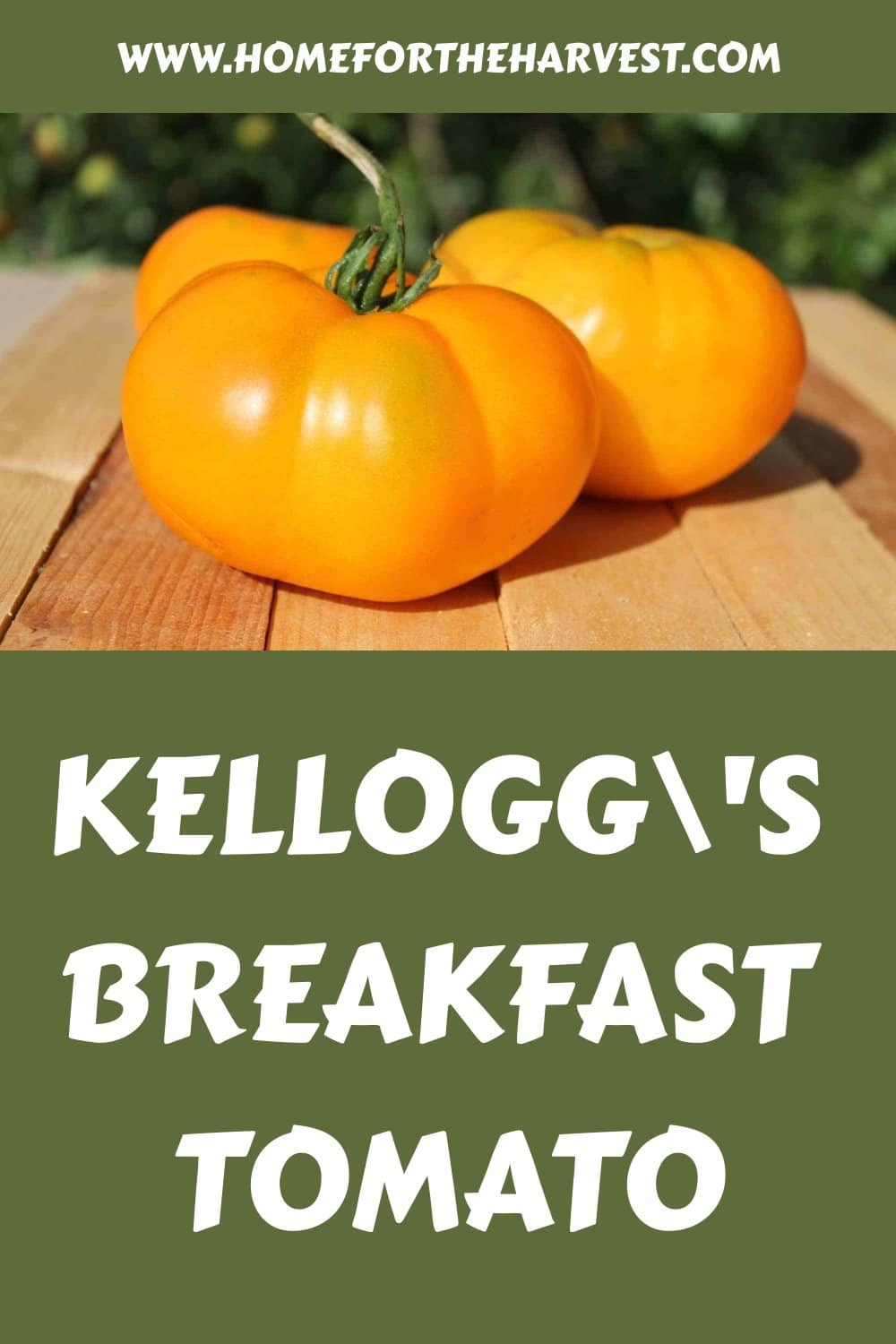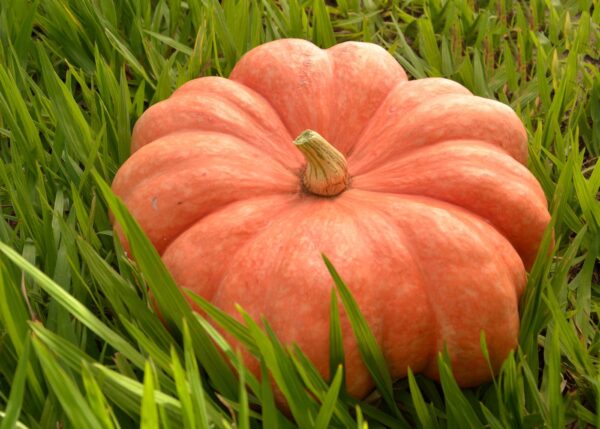Looking for a big orange tomato for bright tomato sandwiches? Time to try the Kellogg’s Breakfast tomato!
The Kellogg’s Breakfast Tomato is a very large orange heirloom tomato cultivar known for its vibrant color and sweet-yet-tangy, delicious flavor. This beefsteak-type slicer tomato variety grows on long, indeterminate vines. Kellogg’s Breakfast is a gourmet heirloom tomato variety not often available in grocery stores (but sometimes available at specialty grocers and farmers’ markets).
Read on to learn all about Kellogg’s Breakfast tomatoes
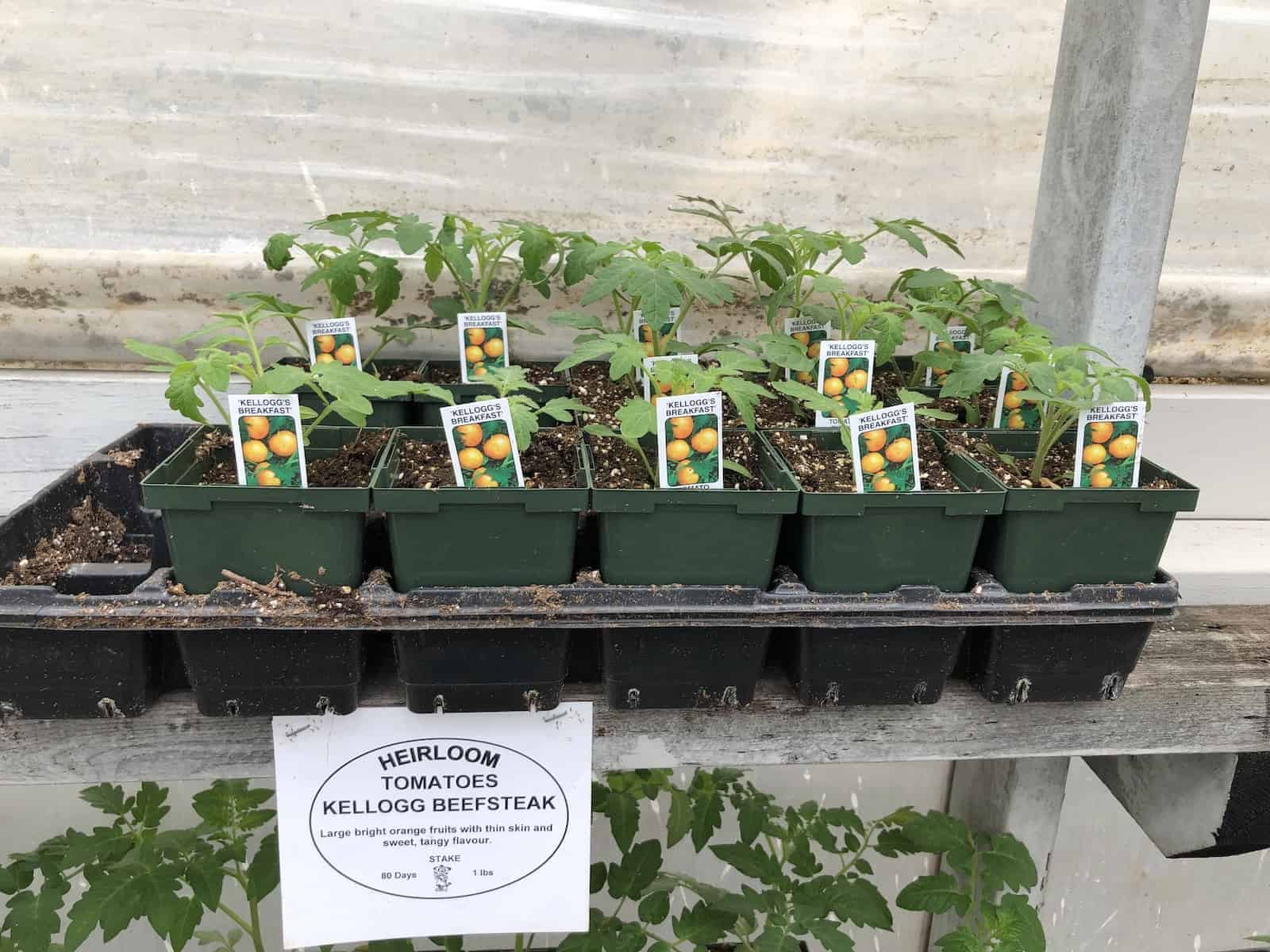
The Kellogg’s Breakfast tomato
The Kellogg’s Breakfast Tomato is an heirloom tomato cultivar discovered by Darrell Kellogg of Michigan (reference: Plants With Stories). The variety is thought to have originated in West Virginia. The sweet flavor of this slicer tomato made it suitable even for breakfast time!
Kellogg’s Breakfast tomatoes are very large, beefsteak-type tomatoes that often reach 1-2 pounds in weight. The fruits have a bright orange peel and oblate flattened shape. The taste is nicely balanced between sweet and tangy. Kellogg’s Breakfast tomato plants are indeterminate and open-pollinated. The large fruits ripen late season.
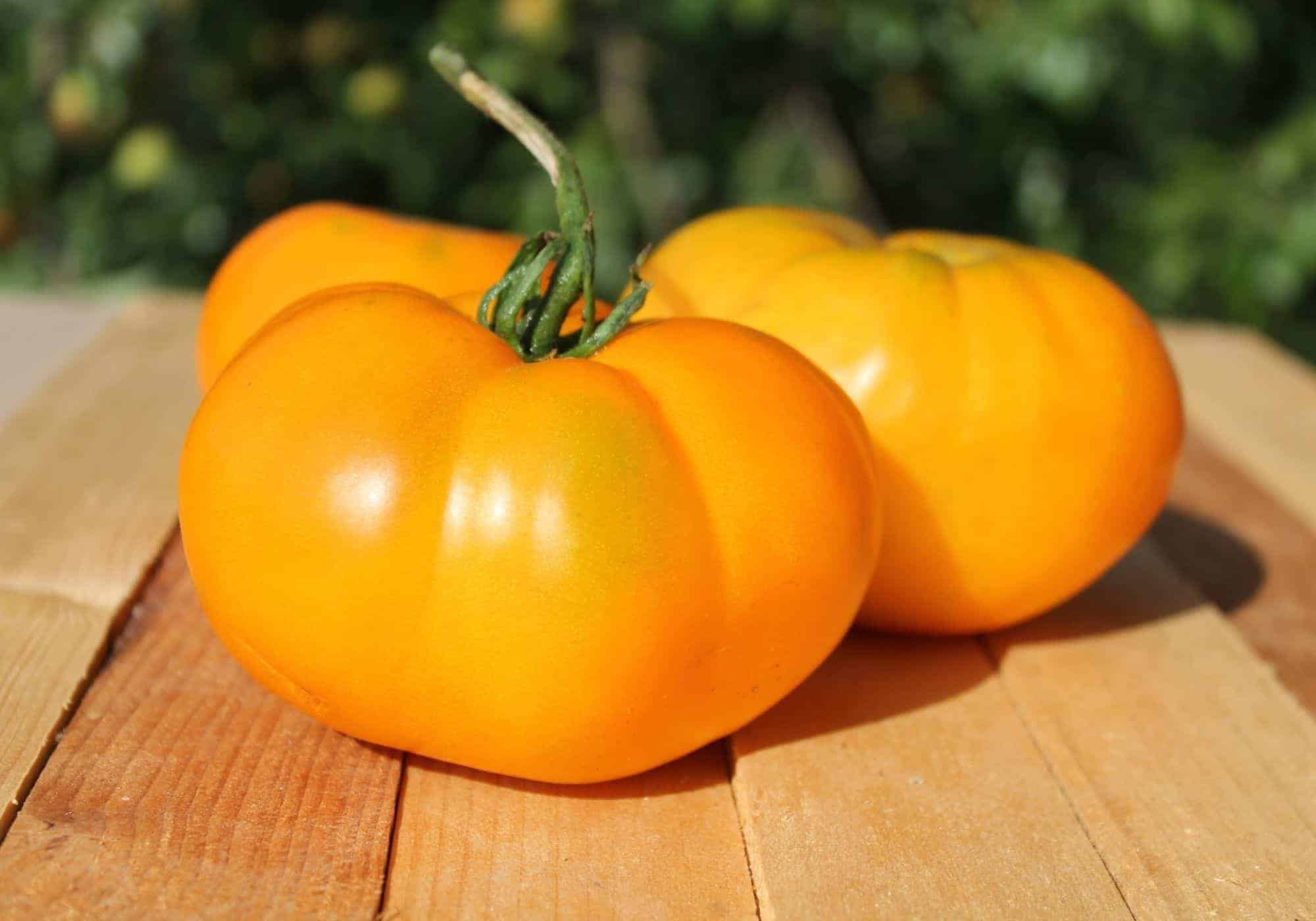
What do Kellogg’s Breakfast tomatoes taste like?
The Kellogg’s Breakfast Tomato is known for its sweet flavor that tends to be well-balanced with a tangy acidic taste. Often considered one of the best-tasting tomatoes, these rich tomatoes have a smooth texture, making them perfect for enjoying fresh.
What are Kellogg’s breakfast tomatoes are very good for enjoying fresh on sandwiches or cubed in salads. They add a bright orange color to bruschetta and to chopped salsa.
Are Kellogg’s Breakfast tomatoes heirloom tomatoes?
Kellogg’s Breakfast Tomato is an heirloom tomato variety that potentially originated in West Virginia. This tomato was discovered by Darrell Kellogg of Michigan. It is not a modern-bred cultivar or hybrid.
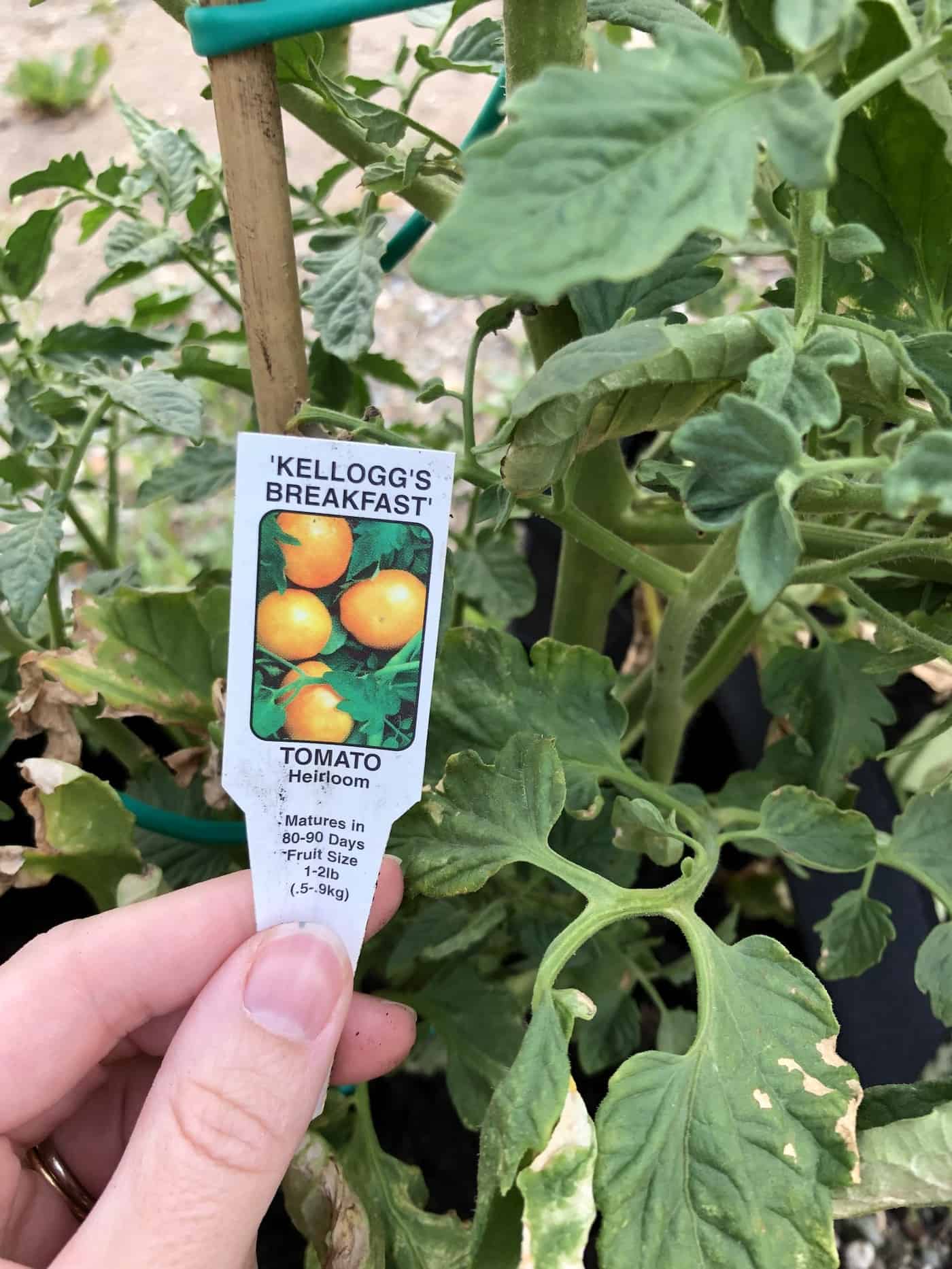
How to grow Kellogg’s Breakfast tomatoes?
Growing Kellogg’s Breakfast tomatoes is very much the same as growing other large vining heirloom tomatoes. You can start your own seeds, buy seedling plants from the nursery, or sometimes even find grafted plants.
Whether you’re growing from seed or from purchased seedlings, don’t put them outdoors until the threat of frost has passed. Tomato plants can be damaged at temperatures below 43°F (6°C). Read more about when to transplant tomatoes outdoors.
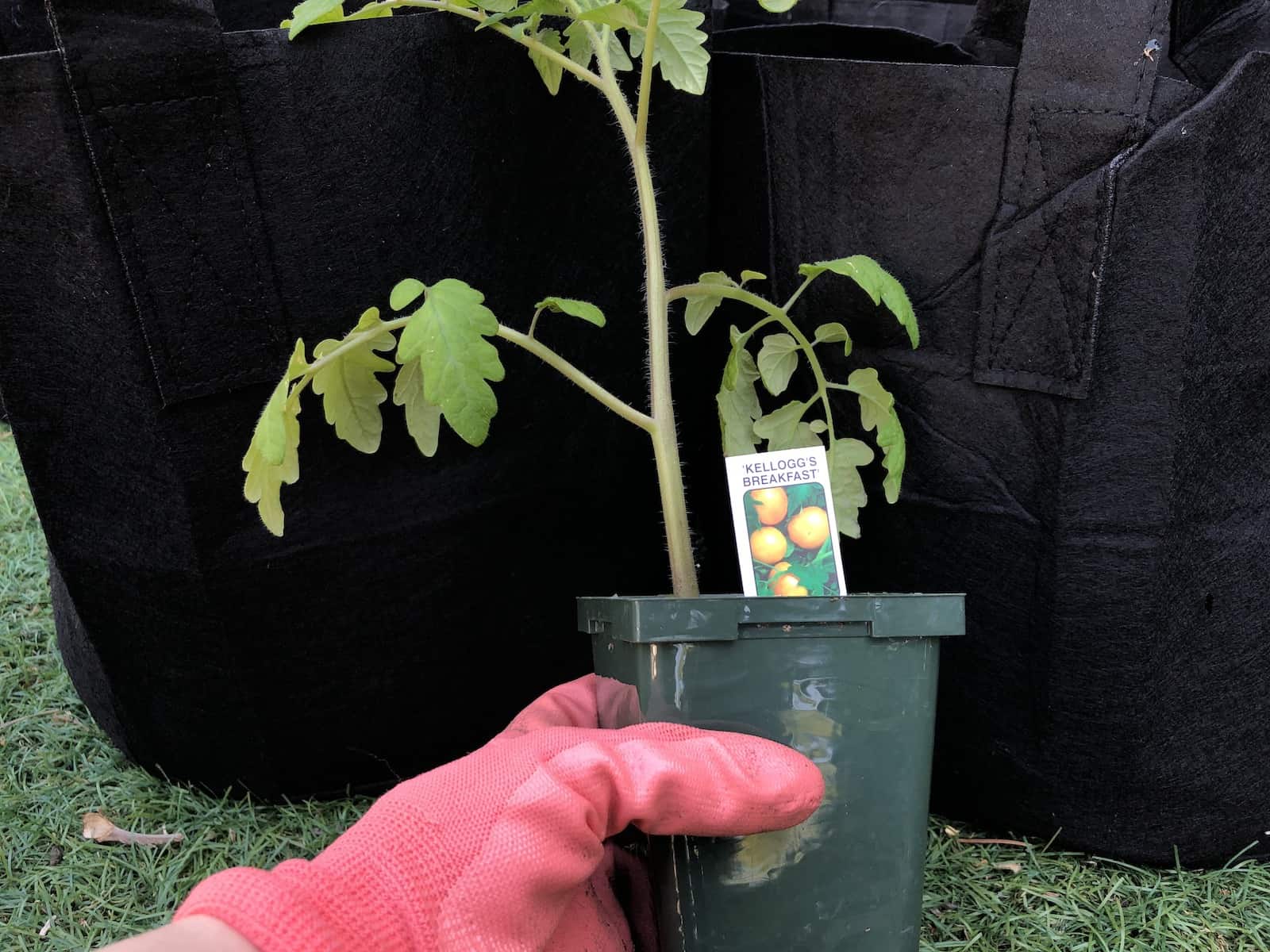
Plant your Kellogg’s Breakfast tomato plants in nutrient-rich soil that drains out excess water easily. They should be in a sunny location (minimum of 6-8 hours of direct sunlight daily), and should be able to be watered wasily.
These are large plants that should be spaced about 2 feet apart. They grow particularly well in raised garden beds and in large containers like wine barrel gardens.
Kellogg’s Breakfast tomato plants are indeterminate, meaning their vines keep growing longer and longer throughout the season. These larger vines require a significant trellis or cage structure to support them. .
Tomatoes are heavy feeders (especially large beefsteak types like Kellogg’s Breakfast) which can benefit from added nutrients when planted in containers or nutrient-deficient soil. Start by top-dressing soil with some homemade compost or veggie garden fertilizer.
How tall do Kellogg’s Breakfast tomato plants get?
Kellogg’s Breakfast tomato plants are among the largest types of tomatoes to grow, with vines reaching 6-10 feet (or more). These vigorous plants grow largest when given a sturdy trellis structure to support the vines. Plant size can also be increased by planting them in a sunny location with nutrient-rich, well-draining soil, and consistent watering.
Kellogg’s Breakfast tomato plants are indeterminate, meaning that the vines continue to grow longer (or taller if staked vertically) throughout the growing season. Unlike determinate tomatoes, they don’t reach a terminal mature height and keep growing longer until the plant is killed by frost or cut back with pruners.
How long for Kellogg’s Breakfast tomatoes to ripen?
Kellogg’s Breakfast Tomatoes take about 80 days to ripen after the seedling plants are transplanted out into the garden. Once the first tomatoes start to ripen (~80 days after transplanting outdoors), more tomatoes will continue to grow and ripen throughout the growing season until the plant is hit with a hard frost or cut back.
Harvesting Kellogg’s Breakfast tomatoes
Kellogg’s Breakfast tomatoes are very large and take a long time to ripen on the vine. Some gardeners choose to leave some fruits on the vine to ripen to peak ripeness, so those fruits can be enjoyed fresh in the garden or harvested for fresh tomato toast. Extra fruits can be harvested/removed early and ripened indoors (at room temperature) as a form of insurance against hungry animals such as deer or birds who might get to your ripening tomatoes before you do!


